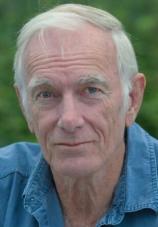Interview: February 6, 2025
TO SAVE THE MAN, John Sayles’ latest novel, sheds light on an American tragedy: the Wounded Knee Massacre, and the “cultural genocide” experienced by the Native American children at the Carlisle Indian Industrial School. In this interview conducted by Michael Barson, Senior Publicity Executive at Melville House, Sayles talks about the extensive research he did for the book, the one person associated with the Carlisle School who he feels should be known to all Americans, how the publishing industry has changed for the good and the bad since he became a published author 50 years ago, and what he’s working on now.
Question: You have explained that your new book portraying the injustices at the Carlisle Indian Industrial School back in 1890 originated as a screenplay that you expanded into TO SAVE THE MAN. Are you still interested in having the story filmed sometime soon?
John Sayles: There are dozens of good stories that could come out of the Carlisle experience, and I hope a good movie based on one of them will be made soon. But having written a novel that goes far beyond what my screenplay did, I won’t be the one to make it.
Q: The most famous alumnus of the Carlisle Indian Industrial School in Pennsylvania is undoubtedly the iconic Jim Thorpe, possibly the greatest athlete of the early 1900s. Was he the only alumnus of Carlisle who would go on to become a figure in mainstream American culture?
JS: “Mainstream,” yes. Most people who have heard of the school know it because of Jim Thorpe. I’d say Zitkala-Sa (aka Gertrude Bonnin) --- who taught at the school for a few years and on whom I based my character, Miss Redbird --- should be as well known. A musical prodigy, championship debater, talented writer (the first, in my knowledge, to blow the whistle on the murder of Osage people for their oil money) and political activist, she’s somebody all Americans should know about.
Q: Once you decided to tell this story, what became your chief resource for information about the establishment of the Carlisle School and how it was functioning circa 1890? Was there any detail you unearthed that you found particularly eye-opening?
JS: I read autobiographies by Colonel Richard Pratt, who founded and ran the school for most of its existence; Luther Standing Bear, who went to Carlisle and wrote about his “Indian boyhood”; and Dr. Charles Eastman, a Native who was at Pine Ridge during the Wounded Knee Massacre. I also looked at other memoirs by students at different “Indian schools,” interviews with indigenous people of various tribes remembering life in “the old days,” and records and school newspapers from the Carlisle students, who came from all over the country with extremely diverse backgrounds.
The internet and other sources helped me piece together the background of Marianna Burgess, who for years ran the print shop and school newspapers at Carlisle and wielded an enormous influence over the comportment of the kids who went there. I learned she was a Pennsylvania Quaker who grew up partly on the Pawnee Reservation when her father was the (very unsuccessful) Indian agent there and had two brothers who “wild-wested” on the road with Buffalo Bill.
I also stumbled upon the diaries of Father Craft, a loose-cannon Catholic missionary who worked at a couple of Sioux reservations and was stabbed, not fatally, during the Wounded Knee Massacre. I hope more information will become available, including that from descendants of the students, in the future.
Q: With 2025 marking your 50th anniversary as a published author, is there any long-percolating book project that you are still determined to write one day?
JS: I’ve already finished another novel, CRUCIBLE, which is currently out looking for a publisher, and I’m 300 pages into yet another. Beyond that, I don’t know.
Q: Entering the world of book publishing in 1975 as you did, you have a broad perspective on the many changes that the industry has undergone since that time. Can you name one change that you as a novelist particularly bemoan? And one change since 1975 that you feel is a cause for celebration?
JS: The publishing business has gotten more like the movie business, with an emphasis on the bottom line. Beginning in the 2010s, I’d hear editors who liked a book of mine say, “We’ll have to send it upstairs, or to our parent company, and they’ll do the numbers.” In other words, the people who greenlit or rejected the book were not going to have read it.
I’ve found the copy-editing process much worse now that computer programs are involved. They make non-human decisions, like italicizing the entire second part of a book, which are hard to undo, and I often feel like versions are sent around without a human having looked at them.
On the positive side, I no longer have to literally cut and paste while doing rewrites (I could never get the pasted lines parallel to the others on the page), and there’s so much less retyping required.
Pictured below is John Sayles talking about TO SAVE THE MAN at a recent event hosted by Print: A Bookstore in Portland, Maine.





